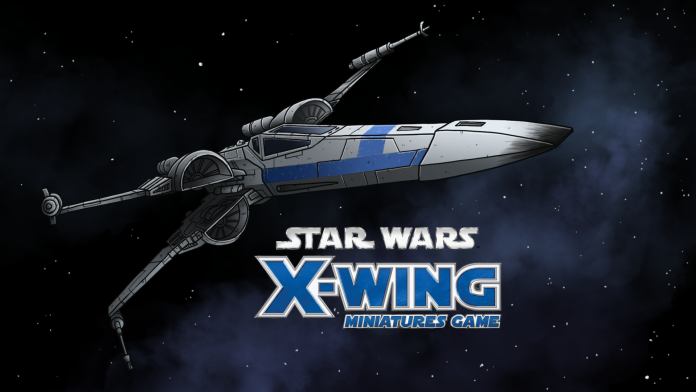We’re changing it up a bit today – BuffaloChicken is back talking about one of his other passions, X-Wing. This week, he’s talking about the ways to play X-Wing solo, both official and fan-made. Before you dive in, we highly recommend taking a moment to review this brief introduction to the X-Wing Miniatures game if you aren’t familiar. Even if you’re familiar with the game, this valuable resource will help set the tone for what follows.
…
Back from checking out that introduction linked above? Ready to talk X-Wing? Good.
Fantasy Flight Games (FFG) recently announced rules for X-Wing Solo, which provides randomized behavior tables that allow a player to fly against dice-controlled ships with “artificial intelligence” (called AI throughout this series of articles). This joins the many other miniature games that have developed solitaire-style modes of play in light of global COVID-19 physical distancing. Goonhammer has already covered Necromunda’s foray into solo play with the new “The Hunt” scenario.
What makes Solo’s AI so unique and ambitious is that it seeks to provide a universal decision tree that can, theoretically, pilot any ship in the entire game. That’s 82 different ships across 7 factions, all controlled by the same randomized tables and decision trees.
Factions and Ship Count
– Galactic Empire (16)
– Rebel Alliance (19)
– Scum & Villainy (20)
– First Order (7)
– Resistance (8)
– Galactic Republic (6)
– Separatist Alliance (6)

This lofty aspiration is something that we’ll keep in mind throughout the article. While sleek and effective AI tables for individual ships already exist in fan-made supplements, that’s not what FFG is doing here – their goal is different. Designing a one-size-fits-all AI mechanism that works for every ship is much more complicated, and any fair assessment of their success needs to recognize how difficult the task they’ve set for themselves is.
Heroes of the Aturi Cluster
One factor we have to mention when discussing Solo is the presence of an existing, excellent, beloved, fan-made AI and campaign system called Heroes of the Aturi Cluster (HotAC). HotAC was published in 2015 by Josh Derksen and, since then, has continued to be played as a standalone cooperative expansion by thousands of X-Wing fans across the globe. Since 2015 the campaign has been updated for the game’s Second Edition, and additional fan-submitted missions continue to grow the library of available materials to this day. While designed to be a cooperative squad experience with friends, it’s absolutely possible to play through the entire campaign solitaire-style.

HotAC’s success hinges on its elegant and frighteningly effective AI system, utilizing intuitive tables that simply require determining a target, direction/distance, and then rolling a D6. The end result feels like playing against an eerily canny invisible foe… almost like dogfighting against an Ouija board, where the unseen spirits are setting dials and moving tiny spaceships to blow you to bits. There is something maddening and yet absolutely delightful about being outsmarted by a D6, with no human behind it, again and again.
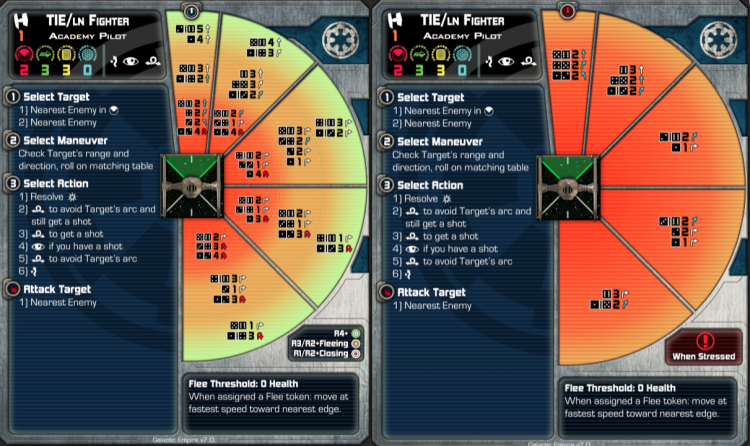
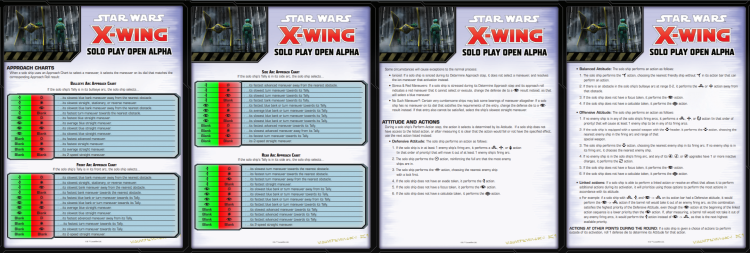
With HotAC in mind, this article will be the first in a series that examines the two systems and their AI components, and the merits of each. FFG has very wisely chosen to release their Solo mechanics in an “alpha play” format with an accompanying Google Form, seeking to improve the Solo AI through fan feedback before announcing a finished document. The goal of these articles is not to bash one or exalt the other, or suggest that Solo is inferior to HotAC – that would be unfair, since the parameters (universal AI vs. tailored AI) are so different. Instead, I hope to identify the features that make HotAC so damn good and see where we can learn from it to help FFG make Solo the best rule set possible.
For anyone who tries a game of Solo, I highly encourage you to fill out the Google Form – whether your experience was positive or negative, each response shows interest in developing this style of play. Who knows… if the interest is great enough, an official FFG campaign system and missions in the spirit of HotAC may not be far behind.
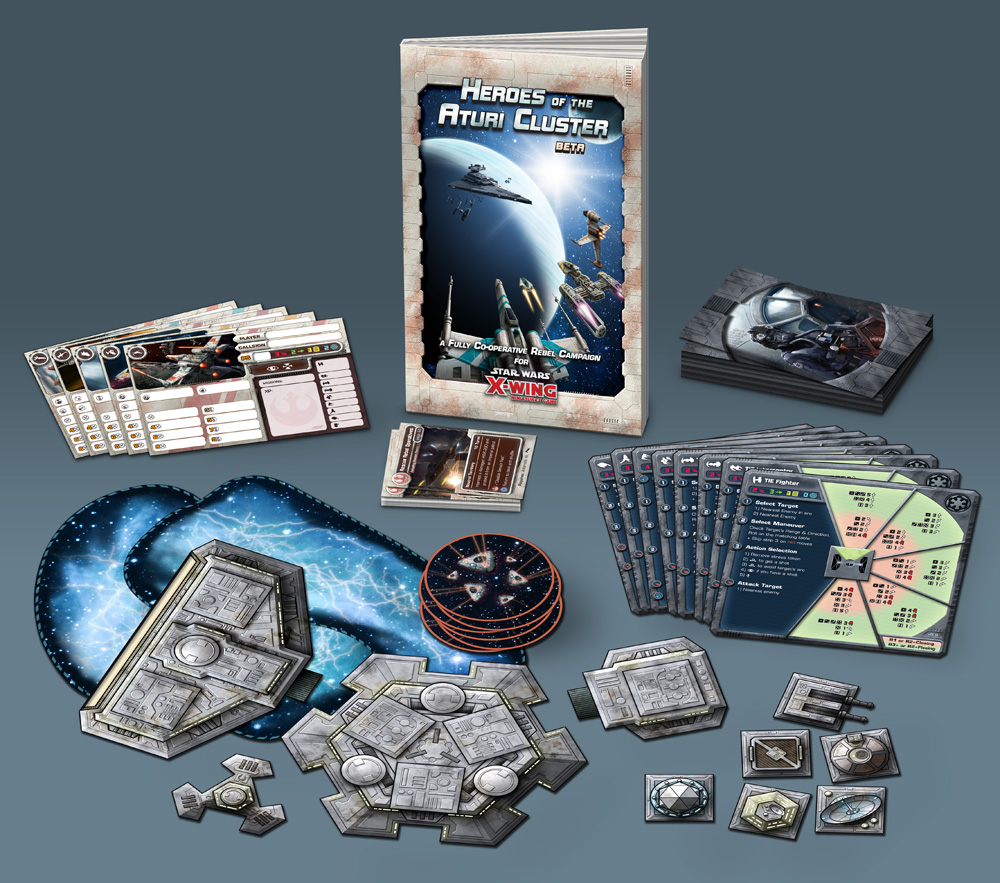
The Reaction So Far
The Solo announcement was posted on FFG’s Facebook page on May 29th, and racked up nearly 500 reactions and 100 comments in the following 36 hours. This is noteworthy since the typical number of reactions for their posts is less than half that number, and scrolling back over two months didn’t yield any other announcement that approached that level of response… so it’s safe to say that enthusiasm for Solo is high. This is a type of gameplay that people are hungry for, especially now.
The Facebook group for HotAC has over 4,600 members and multiple posts on a typical day. That’s an impressive following for a fan-made game supplement published over a half-decade ago, and it bodes well for the success of Solo if FFG can tap into that enthusiasm with its own quality AI and campaign system.

First Impressions
After that lengthy introduction, it’s time to pop into the Solo Play Open Alpha document and start looking at rules and game mechanics. Anyone who knows me from Warhammer 40,000 is probably boggling at that last sentence, since I have a reputation for dismissing the rules of that game as “getting in the way of having fun painting and converting models.” In X-Wing I do actually enjoy the gameplay aspect, however, so please swallow back any snarky remarks about a BuffaloChicken rules article!

The Good:
The “pros” below indicate that FFG is onto something good here, and provide a promising foundation to build on.
- As mentioned earlier, the concept of containing AI rules for an entire galaxy of ships in a single 15-page document is wildly ambitious. It looks like it’s all here, though – from repositioning aces to lumbering Huge Ships.
- Breaking the new rules down by phases of the game (Planning, System, Activation, etc.) makes it easy to follow and find what you need at the right time.
- It seems FFG is writing these rules with an eye toward campaign play, given the following “Get Clear” rule from page 6:“If a player ship flees from the player edge, it is still removed from the game, but the pilot returns to base safely. If you have suffered heavy damage and can’t do any more good here, consider retreating to fight another day.” This has no-impact in a one-off game, but makes perfect sense as part of a longer campaign.
- The narrative possibilities described on page 6 also indicate that scenario missions could be part of a final document, which would dovetail perfectly with the components of the recent Epic Battles release.
The Bad:
Unfortunately, the “cons” section is a bit longer than the “pros” section. Since this is all based on the earliest open alpha version, hopefully this section helps shape feedback that can be used to revise and improve the AI document.
- The document is not formatted to easily reference mid-game. The reference materials that need to be close at hand for gaming should be condensed on as few adjacent pages as possible (ideally formatted to be cut out as easy-reference cards, or with reference cards in an appendix), rather than scattered throughout 15 full-size pages. In addition, these text-heavy pages that need to be shuffled mid-game do not include page numbers for easy re-ordering after a game.
- The Solo AI recognizes 4 distinct arcs: bullseye, front, side, and rear. Some maneuvers, especially in the side arcs, use references such as “towards” and “away from” the tally instead of making any reference to “left” or “right” – this replaces the need for making separate “right arc” and “left arc” tables. The base of a ship has lines on it that allow it to be divided up into more specific arcs, however – the HotAC AI has separate tables for “side-front” and “side-rear.”
/cdn.vox-cdn.com/uploads/chorus_image/image/49601367/top-gun.0.0.jpg)
- In addition to having fewer arcs than the HotAC AI, distance from the tally plays no role in determining the Solo AI maneuvers. This is a bizarre omission, and right off the bat makes it difficult for the AI to act with any degree of accuracy. In general, ships should approach a nearby tally slowly, and a distant tally rapidly. The Solo system essentially makes speed completely random and, given that X-Wing is a game of positioning, rectifying the lack of range in determining AI behavior should be the first task of a revised Solo AI. Compare the 4 tables of Solo (left) with the 15 tables of HotAC (right).
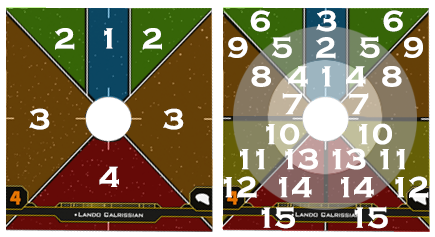
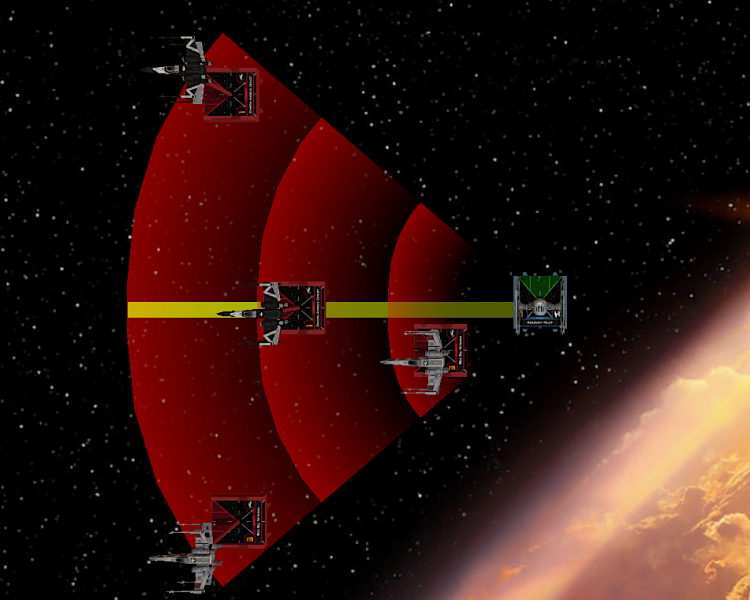
- Other maneuver decisions are bizarre, like the use of obstacles as a reference point. Ships may fly directly toward the nearest obstacle on purpose, making it fairly likely they’ll smash into them. This happens enough with a mindless opponent – no need to program ships to crash on purpose! This is probably intended to help ships hook maneuvers around obstacles and give them some unpredictability, but still seems silly and doesn’t work well in practice. Introducing range bands into the decision-making, as mentioned earlier, might allow for “smarter” ways for ships to interact with obstacles.
- Some results on the maneuver tables call for a ship to execute “its slowest straight, stationary, or reverse maneuver.” If a ship has a 1-straight and two reverse 1-banks (Quadjumper), which of the three maneuvers do you execute? All are 1-speed, and two turn off in opposite directions. Needs a bit of clarification.
- Some AI directions still requires a bit of assumption that should be common sense, but could easily be clarified. For dropping devices, the rules read: “If it rolls at least 1 [hit] or [crit] result, it drops its equipped Bomb or Mine.” Several ship chassis, upgrades, or pilot abilities allow for dropping bombs with different templates. Adding “using the allowed template which brings the device as close to an enemy as possible” at the end of the sentence would clear that right up. Sure, anyone but the foulest gamer would assume that to be the case, but why leave an opening for those people? And for even fair-minded opponents to the AI, how does one determine how to SLAM an AI ship?
- Ships randomly generate an “attitude” (defensive, balanced, or offensive) when rolling for their maneuver which determines their action selection. This seems a little arbitrary, and burying the target lock action in only one of those categories makes munitions pretty tough for AI ships to get off. I’d rather have a single consolidated and “smarter” action flowchart.
The OK:
These observations aren’t necessarily good or bad – but they’re design choices that are notable, especially in comparison to the HotAC AI that many of us are so familiar with.
- Solo has no mechanics for swerving away from obstacles, unlike HotAC. This makes enemies “dumber,” but it does slim down rules and speed up gameplay a little bit. Instead of testing alternative maneuvers to give enemies a chance to adjust a bit and miss an obstacle, Solo AI just crashes right into them. While having TIE Fighters crash into asteroids is a classic gaffe that has brought delight to generations, it’s more rewarding when you have to work hard to lure them into a “trap” collision instead of having them zoom bullishly into a rock nowhere near you.
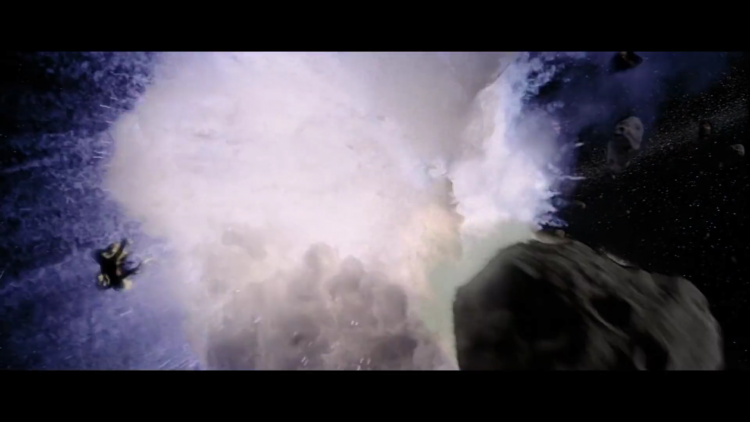
- In Solo it’s impossible for the AI to fly off the board. Instead ships bump the board edge, rotate 90 or 180 degrees, and are assigned a disarm and stress token. This does feel more “bumper cars” than the HotAC mechanic for swerving and swooping to avoid edges, but it’s simple and it works mechanically to keep ships on the table.
- The action AI has no instructions for resolving critical hits. This may be intentional, but having crits accrue on ships does make the game space messier and makes it more likelier that players will miss mandatory rule triggers. HotAC AI always prioritizes repairing crits when possible, which helps keep a simple board state.
Overall, the Solo rules look like they mechanically deliver on their promise – a unified, comprehensive AI for any ship regardless of base size, dial, or action bar. That’s an incredibly bold premise, and future revisions can only improve on it. With added mechanics for recognizing tally range, a single “smarter” action flowchart, and some reformatting to condense the mid-game reference information, this will be an incredible foundation for narrative missions and co-op campaigns.
Next Time: Testing Scenarios
That wraps things up for this week. Check back with Goonhammer in a few days for my follow-up to this article, where I fly against both the new Solo AI and the HotAC AI in identical scenarios. Which AI holds up better in my crosshairs? Will I come out of both (or either one) alive?
Flying Solo, Part 2: Man vs. Machine
[Enormous thanks to my significant other (and beloved HotAC wingmate), for operating the AI in our test battles and offering valuable insight for this article. Thank you for passing me target locks in co-op missions, and for mercilessly gunning me down in head-to-head matches.]

Have any questions or feedback? Drop us a note in the comments below or email us at contact@goonhammer.com.
